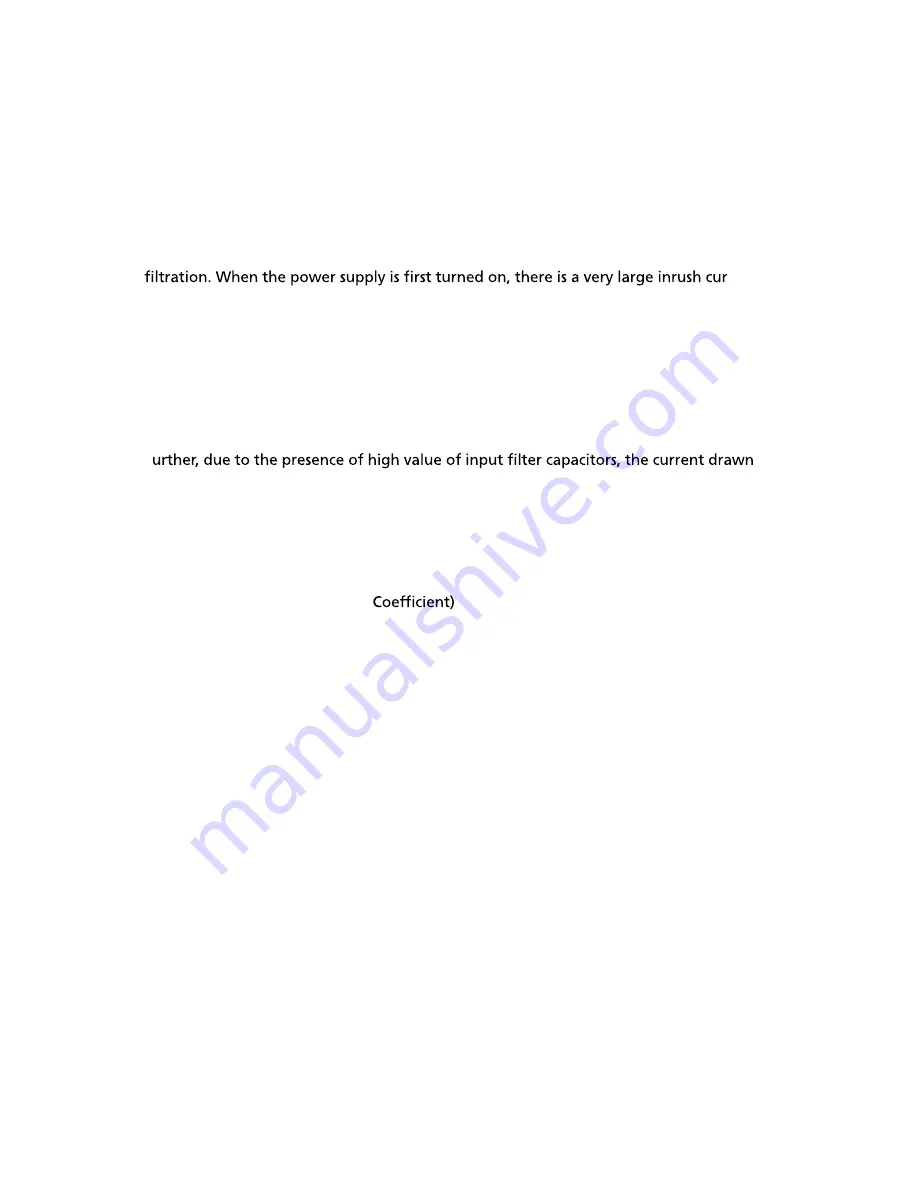
14
14 | SAMLEX AMERICA INC.
4.1 CHARACTERISTICS OF SWITCHED MODE POWER SUPPLIES (SMPS)
Switch Mode Power Supplies (SMPS) are extensively used to convert the incoming AC
power into various voltages like 3.3V, 5V, 12V, 24V etc. that are used to power vari-
ous devices and circuits used in electronic equipment like battery chargers, computers,
audio and video devices, radios etc. SMPS use large capacitors in their input section for
-
rent drawn by the power supply as the input capacitors are charged (The capacitors act
almost like a short circuit at the instant the power is turned on). The inrush current at
turn-on is several to tens of times larger than the rated RMS input current and lasts for
a few milliseconds. An example of the input voltage versus input current waveforms is
given in Fig. 4.1. It will be seen that the initial input current pulse just after turn-on is >
15 times larger than the steady state RMS current. The inrush dissipates in around 2 or 3
cycles i.e. in around 40 to 60 milliseconds for 50 Hz sine wave.
F
by an SMPS (With no Power Factor correction) is not sinusoidal but non-linear as shown
in Fig 4.2. The steady state input current of SMPS is a train of non-linear pulses instead
of a sinusoidal wave. These pulses are two to four milliseconds duration each with a very
high Crest Factor of
around 3 (Crest Factor = Peak value ÷ RMS value).
Many SMPS units incorporate “Inrush Current Limiting”. The most common method is
the NTC (Negative Temperature
resistor. The NTC resistor has a high resist-
ance when cold and a low resistance when hot. The NTC resistor is placed in series with
the input to the power supply. The cold resistance limits the input current as the input
capacitors charge up. The input current heats up the NTC and the resistance drops
during normal operation. However, if the power supply is quickly turned off and back
on, the NTC resistor will be hot so its low resistance state will not prevent an inrush
current event.
The inverter should, therefore, be sized adequately to withstand the high inrush current
and the high Crest Factor of the current drawn by the SMPS. Normally, inverters have
short duration Surge Power Rating of 2 times their Maximum Continuous Power Rating.
Hence, it is recommended that for purposes of sizing the inverter to accommodate
Crest Factor of 3, the Maximum Continuous Power Rating of the inverter should be > 2
times the Maximum Continuous Power Rating of the SMPS. For example, an SMPS rated
at 100 Watts should be powered from an inverter that has Maximum Continuous Power
Rating of > 200 Watts.
SECTION 4 |
Powering Direct / Embedded Switch
Mode Power Supplies (SMPS)
14 | SAMLEX AMERICA INC.
14
Summary of Contents for PST-300S-12E
Page 102: ...102 51 OPMERKINGEN 102...
Page 153: ...153 HINWEISE 153...
Page 204: ...204 51 NOTES 204...
Page 255: ...255 51 NOTAS 255...
Page 256: ...256 256 www samlex com www samlex solar com 256...















































